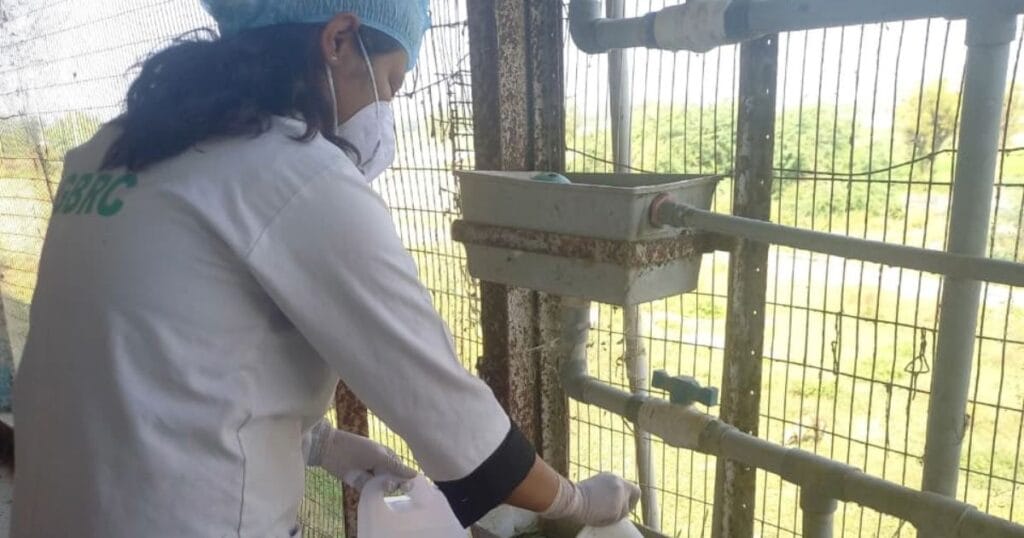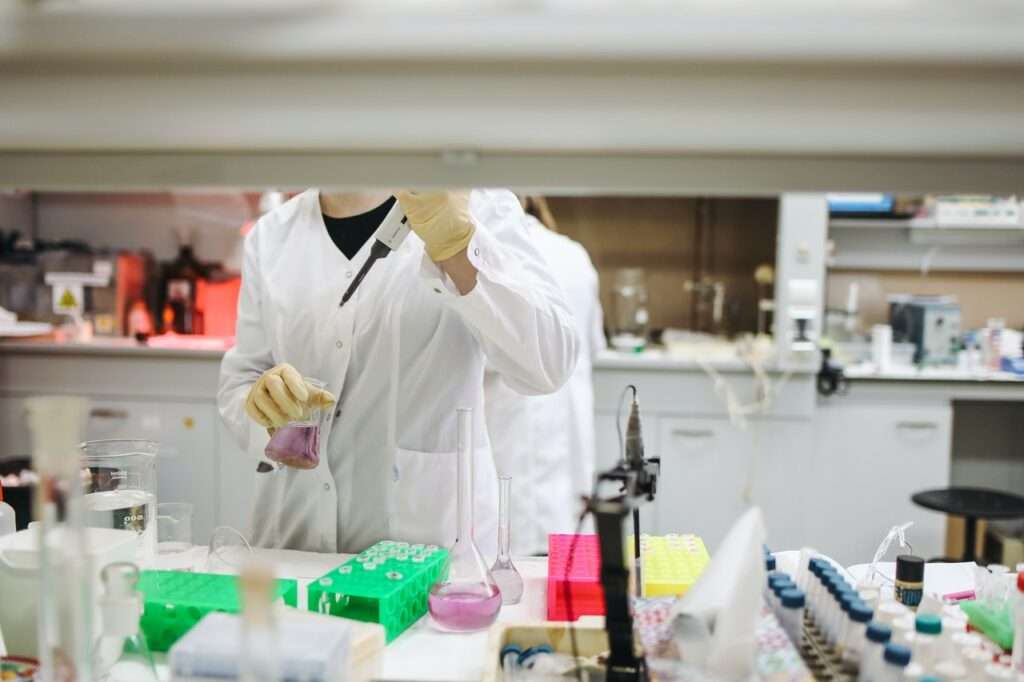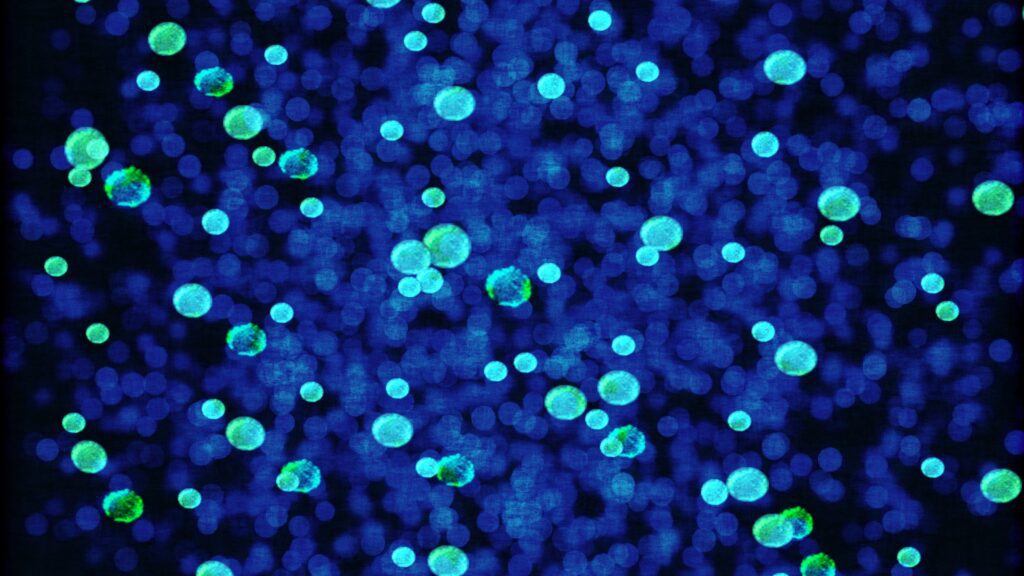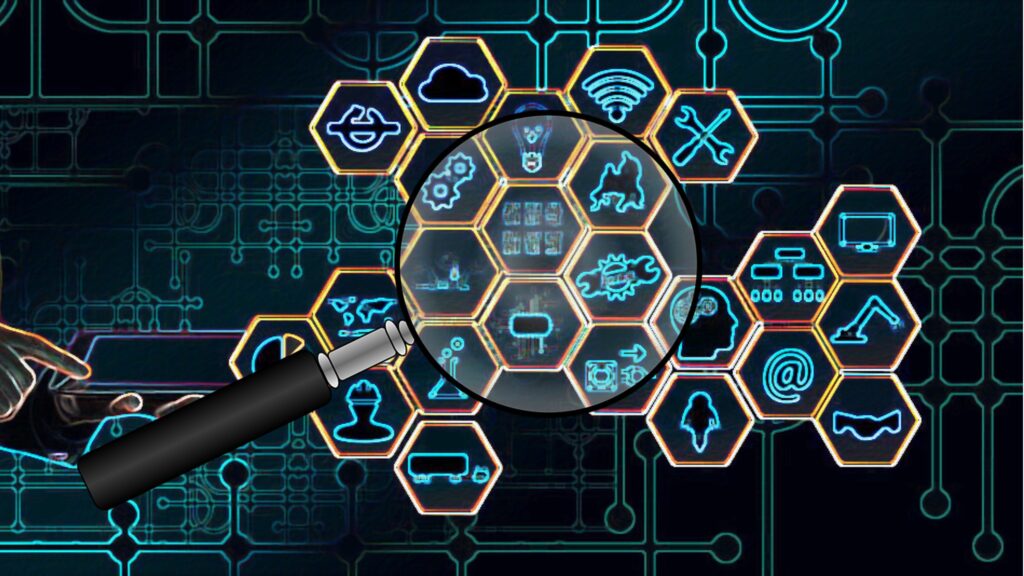
The future of global public health is shifting from reactive symptom tracking to proactive, early-warning detection through Next-Generation Epidemic Intelligence. Environmental Surveillance forms the foundation of this framework. It involves systematically monitoring non-clinical samples like air, water, and soil. This acts as an early warning system by detecting pathogens before they appear in clinical reports. For example, wastewater surveillance can identify pathogens days before patients seek medical care.
Advanced sensors generate large amounts of diverse data. Artificial Intelligence then analyses this data using predictive models. AI correlates signals from environmental, clinical, and non-traditional sources to forecast outbreaks and assess transmission risks.
The One Health Framework governs this integration. This approach recognises the interconnected health of humans, animals, and ecosystems. It ensures a unified strategy for preventing emerging infectious threats before they spread widely.
1. Transforming Public Health Surveillance
Traditional public health systems react after people become sick, tracking clinical cases, hospitalisations, and deaths. This causes delays in recognising outbreaks. Environmental Surveillance detects disease-causing agents or pollutants early, before outbreaks emerge. This early warning is crucial for timely action to protect community studies.
The core value proposition of Environmental Surveillance is its ability to spot early indicators of chemical pollutants or biological agents. The practice of monitoring pathogens in the environment has a long history, notably for poliovirus. Today, this capability is being rapidly expanded, with the Centres for Disease Control and Prevention (CDC) strengthening global health systems. In the context of the COVID-19 pandemic, the CDC launched the National Wastewater Surveillance System using this novel approach for detection and monitoring.
It is important to recognise that the need for Next-Generation intelligence-based Environmental Surveillance extends beyond merely preparing for a novel epidemic. While effective sanitation and disinfection measures implemented in the 20th century successfully controlled acute historical crises like cholera and typhoid. Whereas waterborne diseases remain a persistent and costly burden in modern societies. The persistent and diversifying public health challenge requires continuous, population-level oversight that goes beyond historical infrastructure improvements. Regular Environmental Surveillance provides tools to manage these ongoing threats through constant environmental monitoring, ensuring public safety.
2. Model Approach using Environmental Surveillance and AI
The next-generation epidemic intelligence model combines environmental data collection with artificial intelligence to predict outbreaks more accurately and faster. Environmental samples provide diverse data, from wastewater viral RNA to airborne particles. These are analysed using molecular methods like PCR and genome sequencing. Artificial intelligence integrates this data, identifies patterns, and forecasts disease trends before clinical cases appear.
3. Core Technologies of Next-Gen Surveillance
3.1. Wastewater-Based Epidemiology

Wastewater-Based Epidemiology, also called wastewater surveillance, is a non-invasive and cost-effective method for detecting pathogens in populations. This approach analyses untreated wastewater for viral markers and antimicrobial resistance indicators. It provides a view of community health independent of clinical reporting. Pathogens like SARS-CoV-2, poliovirus, and bacterial agents are frequently monitored by detecting their non-infectious RNA fragments in wastewater. SARS-CoV-2 is shed through the stool of infected individuals.
Wastewater surveillance provides early warning signals of increasing infections. For SARS-CoV-2, genomic sequencing of wastewater samples detected changing infection trends 4 to 6 days before they appeared in clinical case data. This early detection allows faster resource allocation and public health responses than traditional systems.
During the COVID-19 pandemic, wastewater data complemented other surveillance methods. It helped authorities identify areas of increasing viral spread and inform local decisions, such as where to place mobile testing and vaccination sites. This was particularly valuable in underserved communities with limited clinical testing access.
The methods developed for SARS-CoV-2 are now used to monitor other infectious diseases, including monkeypox, avian influenza, lumpy skin disease (LSD), and foot and mouth disease (FMD).
3.2. Monitoring Airborne Pathogen

Air sample monitoring plays an indispensable role in environmental surveillance, particularly for detecting respiratory viruses such as COVID-19 and influenza. Real-time monitoring of harmful microorganisms in the air is especially valuable in crowded public spaces or high-risk settings like healthcare facilities, where the risk of transmission is elevated.
Infectious particles are primarily spread via droplets or smaller droplet nuclei. Droplet nuclei are the residuals of larger droplets that dry and produce particles ranging from 1 to 5 µm, which can remain suspended in the air and potentially contain viable microorganisms. Historically, traditional culture-based air sampling techniques have been time-consuming and limited in their range of detectable microorganisms. To provide timely warnings, modern technological advancements are crucial. Today, high-flow rate air samplers are utilised, capable of collecting large volumes of air (up to 300L/min) in just a few hours. This speed addresses the major challenge that viruses are often present at very low concentrations in the air. By providing rapid bioaerosol monitoring, these systems enable health authorities to take prompt actions, such as enhancing hygiene protocols or initiating isolation measures, providing an early warning of potential disease outbreaks.
While the immediate focus is on detecting airborne pathogens, the principles of environmental control also involve managing contaminated surfaces, which can serve as reservoirs of potential pathogens transferred via hand contact. Public health recommendations for managing airborne infections also emphasise simple but crucial measures such as vaccination and maintaining careful hygiene.
3.3. Real-Time Biosensing

Routine monitoring of water and environmental health requires methods that are not only accurate but also rapid. Traditional analytical chemistry methods, while reliable, often require complex sample preparation, are labour-intensive, and incur high costs, limiting their application for routine, rapid detection of emerging contaminants and pathogens.
Biosensor technology offers a promising biotechnological alternative. Biosensors are sophisticated devices that play a crucial role by converting biological responses, such as the specific interaction between antibodies or nucleic acids and target pathogens, into measurable signals. This allows for rapid, sensitive, and specific detection of various environmental contaminants, including pathogens, pollutants, and toxins. The mobility and portability of biosensors represent a major advantage over traditional techniques, making it possible for in situ and continuous real-time monitoring of pollutant levels without the need for extensive chemical reagents or complex sample preparation. For instance, DNA biosensors, which use biodegradable, highly selective DNAzymes, have proven effective for the sensitive and affordable detection and monitoring of heavy metal ions like cadmium and mercury in aquatic environments.
However, the widespread implementation of biosensors faces practical limitations, including challenges related to their stability and sensitivity, particularly in complex environmental media where competing biomolecules can cause fouling (blocking of nanoelectrodes). Future advancements focus on addressing these issues through the integration of sample preprocessing steps and the development of portable, multifunctional devices for enhanced performance in real-world scenarios.
3.4. PCR vs. Next-Generation Sequencing (NGS)

The Polymerase Chain Reaction (PCR) remains foundational due to its high sensitivity and specificity, enabling the detection and quantification of genetic material from pathogens in various environmental samples. PCR is instrumental in tracking the spread of infectious agents by using specific primers designed for known novel pathogens. Nevertheless, while highly effective for targeted surveillance, standard RT-PCR applications only target small regions of the genome and cannot generally detect novel genetic variants without specific prior knowledge of their sequences.
This limitation highlights the critical need for Next-Generation Sequencing (NGS), especially Whole-Genome Sequencing (WGS), in modern epidemic intelligence. NGS provides high-throughput, comprehensive sequencing of entire genomes or metagenomes present in complex environmental samples. NGS capability is crucial for tracking infections at scale. It allows for the simultaneous detection and identification of a wide array of pathogens, including bacteria, viruses, fungi, and parasites, within a single sample.
NGS enables true discovery surveillance. Unlike PCR, which detects known pathogens with high sensitivity, NGS allows metagenomic analysis by sequencing all microorganisms present. This broad capability is essential for discovering novel or emerging infectious agents beyond targeted tests. NGS provides crucial information on pathogen evolution. It detects and identifies variants like Omicron or influenza subtypes that may affect treatment or diagnosis. In wastewater surveillance, whole genome sequencing (WGS) cannot confirm an entire variant’s presence, but can detect pieces of variant-defining mutations. This offers early evidence that a variant is likely circulating in a community before clinical confirmation.
This represents a fundamental shift from monitoring known targets to detecting anything novel or emerging. This capability addresses the need to identify threats before they spread widely.
3.5. Microbial Source Tracking and Characterisation

Another vital molecular application is Microbial Source Tracking (MST). This technique identifies specific sources of faecal contamination in environmental samples, such as human sewage, agricultural runoff, or wildlife waste. MST uses molecular methods like NGS or Quantitative PCR (qPCR) to detect and quantify specific genetic markers from these sources.
This information helps health authorities target remediation efforts and interventions in high-risk areas. By identifying contamination sources precisely, MST prevents further spread and protects public health.
3.6. AI’s Role in Correlating Disparate Signals

A significant limitation in traditional epidemic intelligence is data silos. Systems often process each data source independently and fail to identify crucial cross-source correlations. AI acts as a translator by synthesising disparate signals. For example, a large language model-based epidemic intelligence system can integrate environmental data from wastewater surveillance with non-traditional inputs. These include increased online searches for specific symptoms or social media posts about illness in a particular city. By combining these data, the system can generate contextual insights, such as: “A potential outbreak is escalating, with multiple independent sources confirming rising cases of an unknown respiratory illness.” This correlation ability significantly enhances early warning capabilities.
Machine learning models are paramount for finding patterns in large datasets and enabling predictive modelling. They help forecast disease outbreaks and estimate case numbers by incorporating variables from human, animal, and environmental populations. This shift from simply collecting data to making causal predictions is transformative. Environmental data streams, such as those derived from WBE, are typically noisy, scattered, and affected by external factors like climatic variability. AI modelling is the engine that converts these heterogeneous data streams into standardised, temporally spaced, and predictive information through necessary preprocessing steps like normalisation and smoothing. This critical function moves environmental surveillance data from observing the past to accurately forecasting the near future. While short-term prediction can be accurate using simple autoregressive models, forecast accuracy declines rapidly for longer periods.
4. One Health Approach

The increasing human density due to urbanisation, coupled with climate change and globalisation, has created an interconnected world where infectious diseases pose a constant threat. This urgency is underscored by the biological fact that approximately 60% of emerging infectious diseases of humans originate directly or indirectly from animals, both wild and domestic. Diseases like COVID-19, Ebola, and avian influenza exemplify the need for a unified approach to surveillance.
The One Health framework has emerged as the crucial strategic approach to understanding and managing these threats. One health is a holistic, unifying framework that recognises the intricate and interdependent relationship between the health of humans, animals, and ecosystems, moving past conventional disease surveillance systems that operate independently across sectors. The close links between these fields demand close collaboration, communication, and coordination between public health officials, veterinarians, and environmental scientists. Human activities, such as animal trade, agriculture, urbanisation, extractive industries, and encroachment into wild areas, stress ecosystems and create new opportunities for disease spillover—the jump of infectious diseases from animals to people. The gaps in integrated one health knowledge and prevention were seen as key factors driving the severity of the COVID-19 pandemic.
A robust one health surveillance system is thus not merely theoretical; it is a necessity. It functions by integrating data from multiple sources, including human and animal health clinics, laboratories, and environmental monitoring systems. This comprehensive, integrated view allows for the early identification of unusual disease patterns, animal die-offs, or environmental changes that may indicate disease emergence, enabling prompt detection and prevention of public health threats before they gain a foothold.
5. AI in Predicting the Invisible
The AI analysis of thousands of wastewater samples in Las Vegas demonstrated the power of AI to detect new viral variants early without patient data research. AI also supports infrastructure maintenance by predicting sewer pipe corrosion, ensuring system reliability. These applications embody the shift from reacting to predicting and preventing outbreaks.
6. Ethical Balance
Maintaining public trust involves protecting privacy by aggregating data at community levels, preventing individual identification, and avoiding stigmatisation. Transparent communication about data quality and AI decisions is vital. Ethical AI design, minimising bias and ensuring explainability, is necessary to prevent unfair outcomes.
7. Building Resilience
This integrated model of environmental surveillance, powered by AI and guided by One Health principles, offers a transformative approach to epidemic preparedness. Overcoming data, ethical, and infrastructure challenges is essential to realising its full potential. This will enable early threat detection, protect public health, and provide communities with timely information.
The future lies in decentralised, resilient sensor networks using Internet of Things (IoT) technologies, enabling broad and real-time monitoring. Blockchain and edge computing may support autonomous sensor management to ensure continuous, tamper-proof operation studies. Coordinated governance and funding structures can sustain and scale next-generation epidemic intelligence globally.
8. Research Gaps and Challenges
- Data Integration: Public health, veterinary, and environmental data remain siloed. Real-time, integrated data sharing across these sectors is limited by organisational and political barriers to research.
- Standardisation: Lack of unified protocols for data collection and processing hampers comparability and large-scale deployment.
- Ethical Concerns: Increasing the spatial resolution of surveillance can risk individual privacy and cause stigma in communities. AI systems may inherit biases from training data, affecting fairness and transparency studies.
- Infrastructure: Many regions lack extensive sensor networks and computational resources needed for effective AI analytics.
- Predictive Limits: Forecast accuracy falls off beyond short-term windows, requiring ongoing research into improved modelling techniques.
To address these gaps, we need requirements for horizontal data sharing, standardised surveillance frameworks, ethical AI governance, expanded decentralised sensor networks, and public education recommendations. Therefore, increased focus on these research gaps could significantly transform the development of the next-generation epidemic intelligence system worldwide. In the near future, this system will be one of the most significant contributions to clinical development.
Conclusion
Next-generation epidemic intelligence, driven by environmental surveillance and advanced AI modelling, marks a pivotal advancement in public health preparedness. Integrating data from wastewater analysis, air sampling, and biosensors with machine learning enables earlier threat detection, more accurate forecasting, and targeted interventions. This proactive approach fills gaps in traditional surveillance. It helps health systems respond quickly and effectively to new outbreaks, including those at the human-animal-environment interface.
Despite its promise, AI-driven next-generation epidemic intelligence faces key challenges. These include integrating data across sectors, standardising surveillance protocols, and addressing ethical issues like privacy and algorithmic fairness. Continued collaboration among public health leaders, technologists, and policymakers is essential. This ensures robust governance, transparent communication, and public trust.
Looking ahead, embracing interoperable, decentralised surveillance networks and ethical AI practices will underpin our resilience against emerging health threats. By harnessing the full potential of environmental monitoring and AI, societies can move from reactive crisis management to a future of anticipatory, equitable, and sustainable epidemic response.

